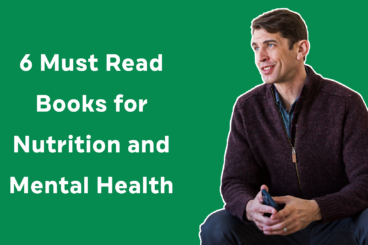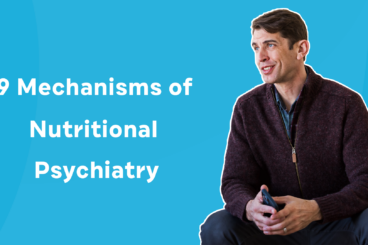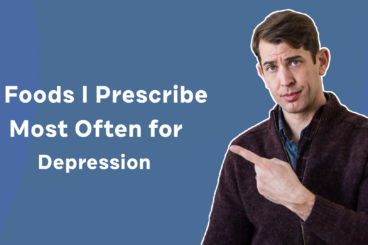Are colorful foods good for our brain health and our mental health? Eating the rainbow is one of the best public health messages I’ve heard in a long time because different colors in foods represent different phytonutrients. Phytonutrients are nutrients or molecules that are found in plants that they make. So if you look at these smoothies from my nutritional psychiatry cookbook, Eat Complete, these all have different phytonutrients. The orange, which comes from pumpkin has lots of carotinoids. These are a whole family of phytonutrients with about 5,000 different carotinoids. We use some of these for interesting things like vitamin A and we’re still discovering how others impact our health. With green phytonutrients, which includes spinach and kiwi, you’re getting all types of different nutrients compared to the purple from the wild blueberries that are filled with anthocyanins which makes plants and fruits blue and purple.
Take a look at this diagram.

The flavanol family is filled with powerful molecules, whether it’s the flavanols that are in dark chocolate, which have been shown to help with age related memory decline when they’re in a concentrated form, or anthocyanins that we know improve mental health and brain health. It was confusing as to what their mechanism was until a couple of years ago, until the journal Nature published a groundbreaking article describing how anthocyanins which are what make blueberries, blue were involved in the microbiome. They found out that is how they exhibited their effect, meaning that they don’t impact our mental health and our brain health by traveling to the brain, they impact our mental health and brain health by affecting the microbiome.
Different plants have all types of different phytonutrients. When we look at our plate, a simple test of how brain healthy your diet or your plate of food is is asking how many natural colors are on there. It’s one of the things that I’ll do in my own home when I’m cooking or preparing a meal. I’ll glance at it and decide if I should add a color or two, whether it’s a little bit of microgreens on top or a sliced up red or yellow pepper, there are all kinds of ways for us to increase the rainbows.



